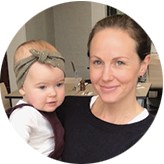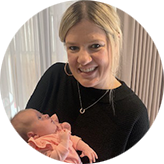Natural Movement for Natural Growth
When they’re first born, the bones in children’s feet are still forming, only about three quarters of the bones even exist yet and over the next few years their feet will change a lot! They’re squishy and cute, but as every parent knows children grow up fast and their feet will soon be taking shape. They need shoes for protection, but it’s important that their shoes allow for free and natural movement, without restriction, to guide them on their earliest adventures.
High quality children’s shoes should be extremely flexible, not rigid, to allow children’s feet to grow normally and give them the same range of movement they would have if they weren’t wearing shoes at all. Bobux shoes are designed with the most comfortable and breathable materials we could find to follow your child’s natural movement almost like a second skin.
THE FIVE STAGES OF FOOT DEVELOPMENT
Throughout their early years, children’s feet will go through five stages of development as they learn to crawl, walk, run, dance and play. The more they grow and develop, the more their feet need to grow with them, which is why they have the right shoes for whatever stage they’re in. At Bobux, we design shoes for stage and not age. All children grow at different rates and there is no one size fits all.
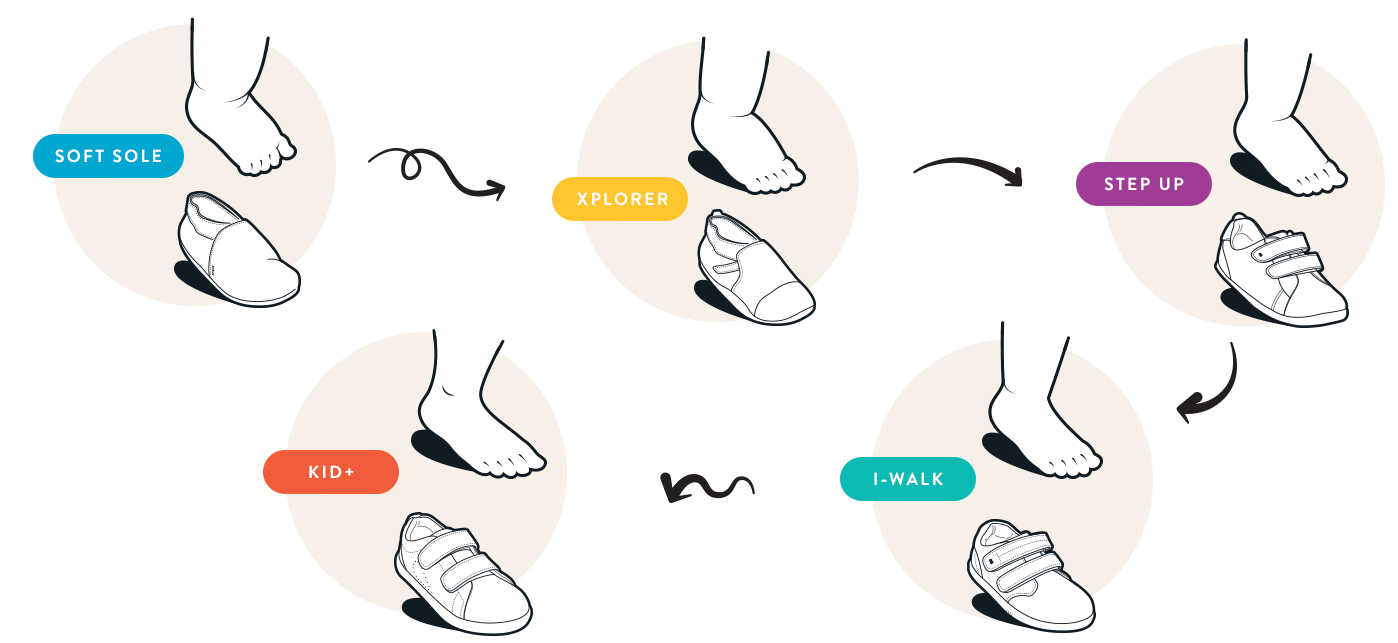
Our feet aren’t fully formed until we’re about 13-18 years of age, but much of the big changes happen in the first six or so years. When they’re fully grown, children will have 26 bones, 33 joints and over 100 muscles, tendons and ligaments in each foot, but when they’re born their tiny bones are still growing and their feet are mostly cartilage.
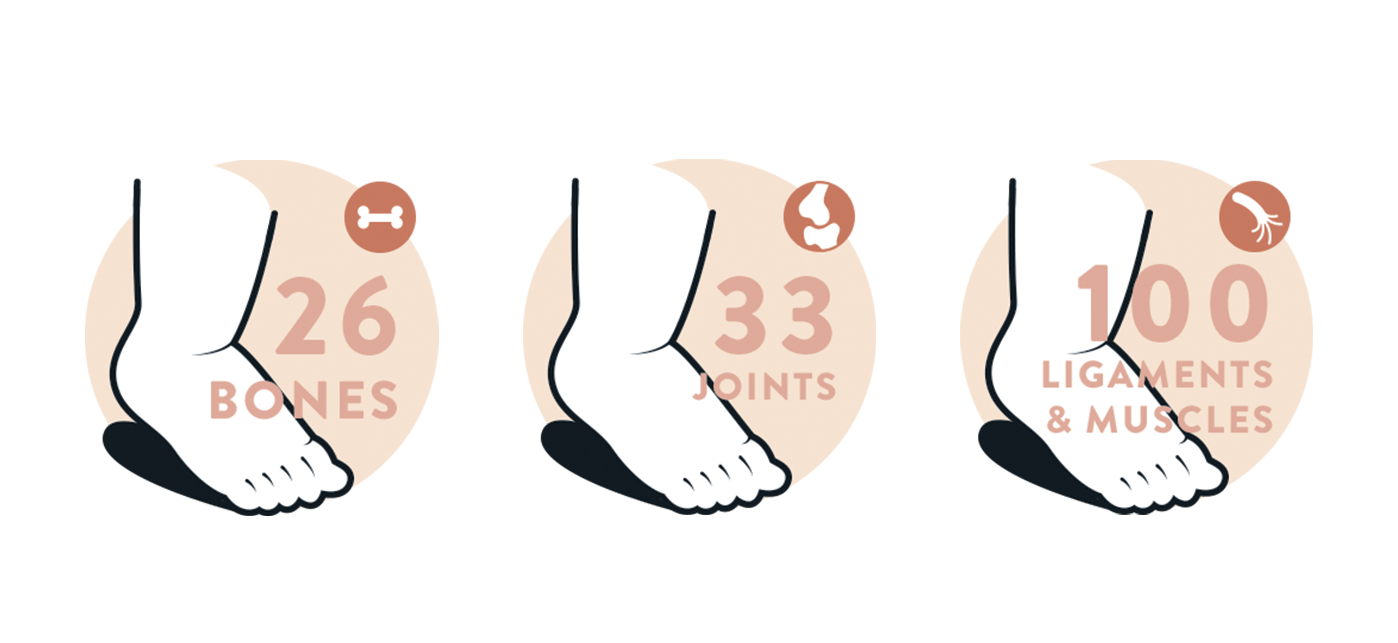
-
The Stages
Throughout their early years, children’s feet will go through five stages of development as they learn to crawl, walk, run, dance and play. The more they grow and develop, the more their feet need to grow with them, which is why they have the right shoes for whatever stage they’re in. At Bobux, we design shoes for stage and not age. All children grow at different rates and there is no one size fits all.
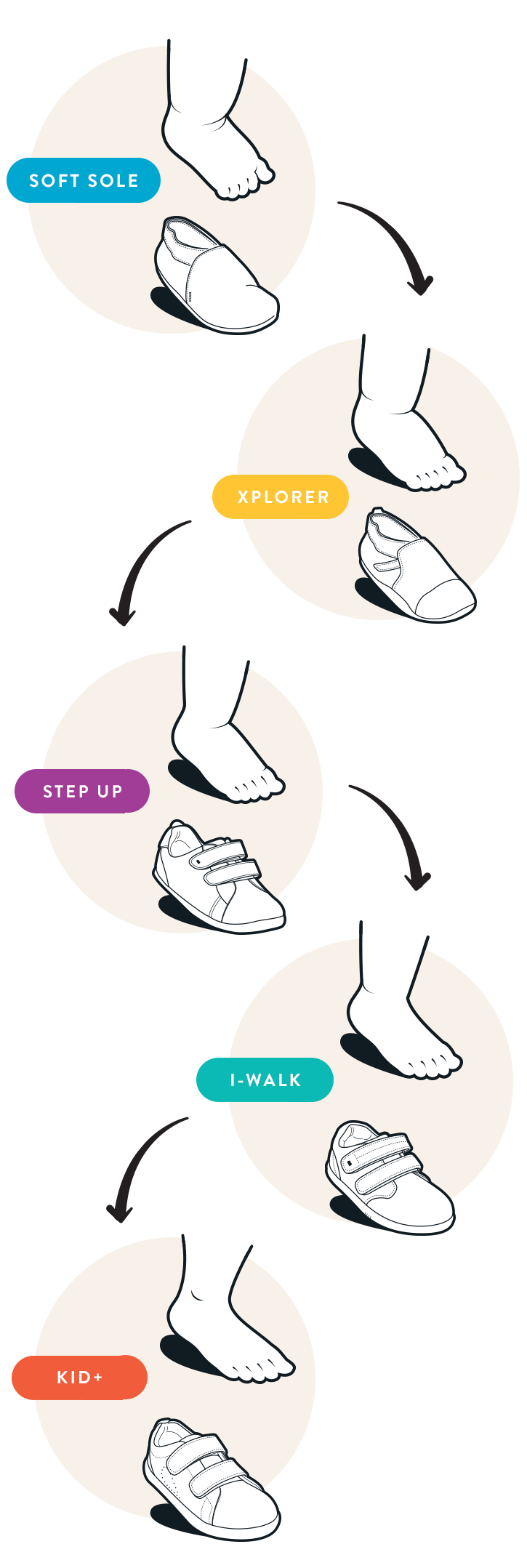
-
The Stages
Our feet aren’t fully formed until we’re about 13-18 years of age, but much of the big changes happen in the first six or so years. When they’re fully grown, children will have 26 bones, 33 joints and over 100 muscles, tendons and ligaments in each foot, but when they’re born their tiny bones are still growing and their feet are mostly cartilage.

HOW DO I KNOW MY CHILD’S FEET ARE DEVELOPING PROPERLY?
Parents often ask us “how do I know my child is on track?” They want to know their little ones are growing and developing normally - especially their feet! The truth is children develop at different rates, how long they take to start walking or how early their feet start to form can vary a great deal.
The important thing is not to stress, soon after they can crawl they will walk and then run and jump. Just know that your child will develop at their own rate. For starters, children’s feet won’t be fully developed until between the ages of 13 - 15 for girls and 15 - 18 for boys.
Over those 18 years your child’s feet will go through many changes as they grow from being infants to young adults. To help understand what stage your child is at, read more about the five stages of development here.
Children typically start to walk between 9-18 months but every child is different so don’t be worried if your little one starts earlier or later. They will usually appear flat-footed, with their feet slightly turned in and they have a broad gait, bent knees and bowed legs. As they grow and start to move in different ways, the strength improves in their lower limbs and these positions will change but they will continue to develop their movement for many more years. It might even be adulthood before your child settles into their natural, straight-legged position!
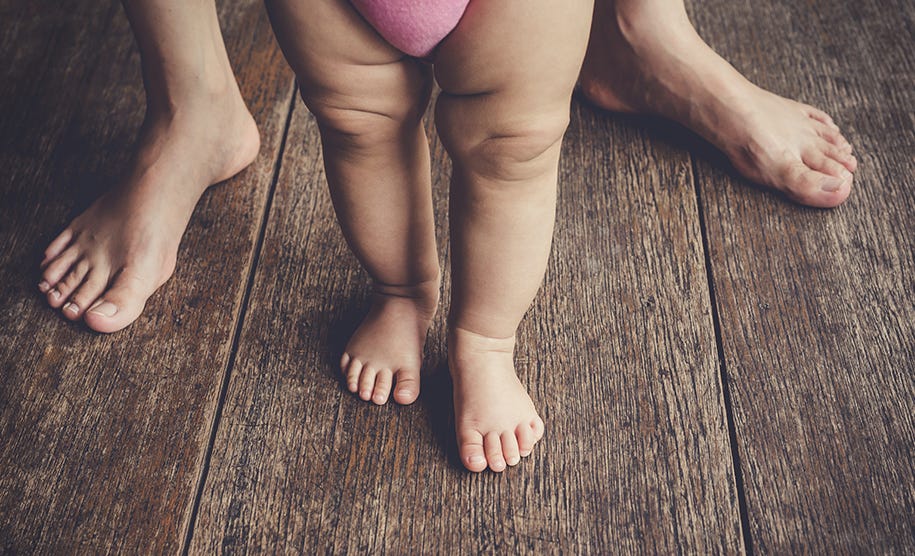
Certain milestone activities can give an indication of how their development is progressing, so you know they’re on the right track! At 2-3 years, look out for milestones such as confident walking, climbing onto and down from furniture without assistance and gaining speed. Between 4-5 years, children should be confidently walking and running around obstacles, changing directions and stopping suddenly. Children of this age should also be able to go up and down stairs one step at a time. At 6 years, children should be confidently hopping and jumping, able to balance on a beam or log and learning to skip with a skipping rope. But remember, every child is unique and will develop at their own rate. Find out more here about some other milestones you can watch out for.
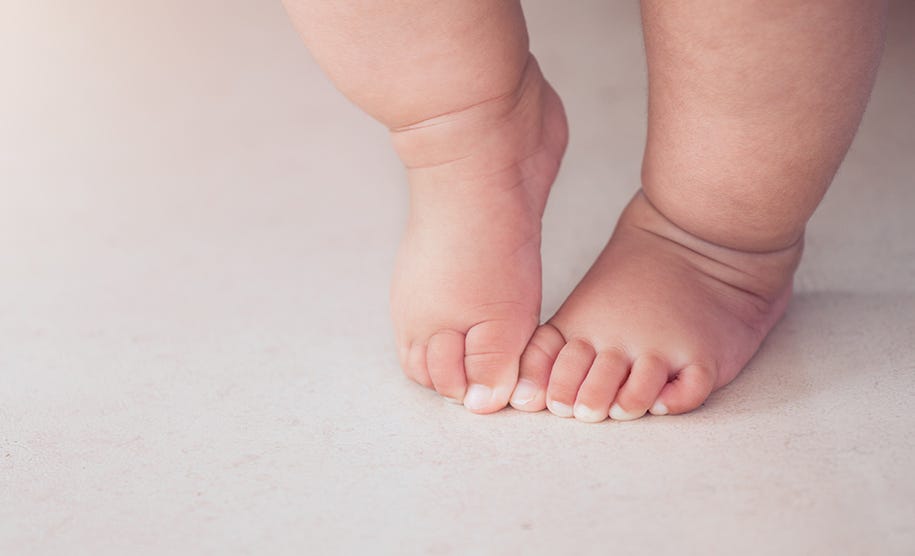
In the first few years their bones and muscles aren’t yet developed enough to support an arch, so their feet appear flat with a fatty pad where the arch will one day be. So don’t worry about your baby’s flat feet just yet - their arches will begin to develop when they’re around 2-3 years old, and you should see a normal arch in your child’s foot when they’re around 7 years old. Some kids never even develop an arch, and that can also be ok! Over time, the foot will appear leaner, the fatty layer beneath their feet will start to disappear, their achilles will become more defined and their toes will spread. When they’re around Preschool age, your child’s feet will be more dexterous with a defined arch and a leaner shape. They’re starting to look mature, not too dissimilar to an adult’s foot.
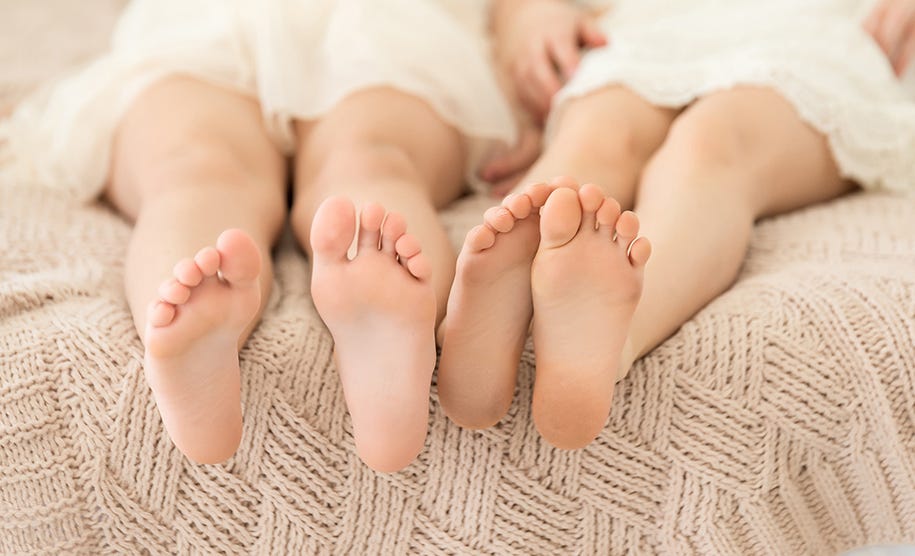
WALKING & KNEE POSITION
Children typically start to walk between 9-18 months but every child is different so don’t be worried if your little one starts earlier or later. They will usually appear flat-footed, with their feet slightly turned in and they have a broad gait, bent knees and bowed legs. As they grow and start to move in different ways, the strength improves in their lower limbs and these positions will change but they will continue to develop their movement for many more years. It might even be adulthood before your child settles into their natural, straight-legged position!

WALKING & KNEE POSITION
Certain milestone activities can give an indication of how their development is progressing, so you know they’re on the right track! At 2-3 years, look out for milestones such as confident walking, climbing onto and down from furniture without assistance and gaining speed. Between 4-5 years, children should be confidently walking and running around obstacles, changing directions and stopping suddenly. Children of this age should also be able to go up and down stairs one step at a time. At 6 years, children should be confidently hopping and jumping, able to balance on a beam or log and learning to skip with a skipping rope. But remember, every child is unique and will develop at their own rate. Find out more here about some other milestones you can watch out for.

FOOT SHAPE
In the first few years their bones and muscles aren’t yet developed enough to support an arch, so their feet appear flat with a fatty pad where the arch will one day be. So don’t worry about your baby’s flat feet just yet - their arches will begin to develop when they’re around 2-3 years old, and you should see a normal arch in your child’s foot when they’re around 7 years old. Some kids never even develop an arch, and that can also be ok! Over time, the foot will appear leaner, the fatty layer beneath their feet will start to disappear, their achilles will become more defined and their toes will spread. When they’re around Preschool age, your child’s feet will be more dexterous with a defined arch and a leaner shape. They’re starting to look mature, not too dissimilar to an adult’s foot.

HOW TO CHOOSE THE RIGHT SHOE FOR YOUR CHILD
Choosing the right shoe for your child is about more than just finding the right size, it’s important to also find a shoe that’s designed especially for whatever developmental stage they’re at. At Bobux, we design our shoes to meet children’s needs for each individual stage, ensuring the right mix of adjustability, flexibility, breathability and fit to help them grow and develop naturally. You can read more about our “Stage not Age” philosophy here, or click below to learn about the individual stages and find out what stage your child is at.
LEARN MORE ABOUT THE DEVELOPMENTAL STAGES






